SEAWORDS
TheMarineOptionProgramNewsletter

April2023




Aloha and Welcometo theApril issueof Seawords!
This month, our issuewill fill you in on all theimportant things happening in marinesciencearound theworld. Interested in technology?Learn about theway drones arebeing used to gather new and exciting data on page4. Passionateabout ocean conservation?Read about largescalemarinedebris cleanups (page8) as well as thefight against a starfish who likes to munch on corals (page20).
On page18, newly discovered fossils redefinehow welook at life's ability to bounceback from mass extinctions. Page24 will giveyou a peek into theexciting new policies presented at a recent UN conferenceaimed to conservemarinebiodiversity. Finally, meet April's Creatureof theMonth (page12)... the manta ray!
What would you liketo seemoreof in Seawords?Send in your thoughts, and follow us on Twitter and Instagram at @mopseawords!
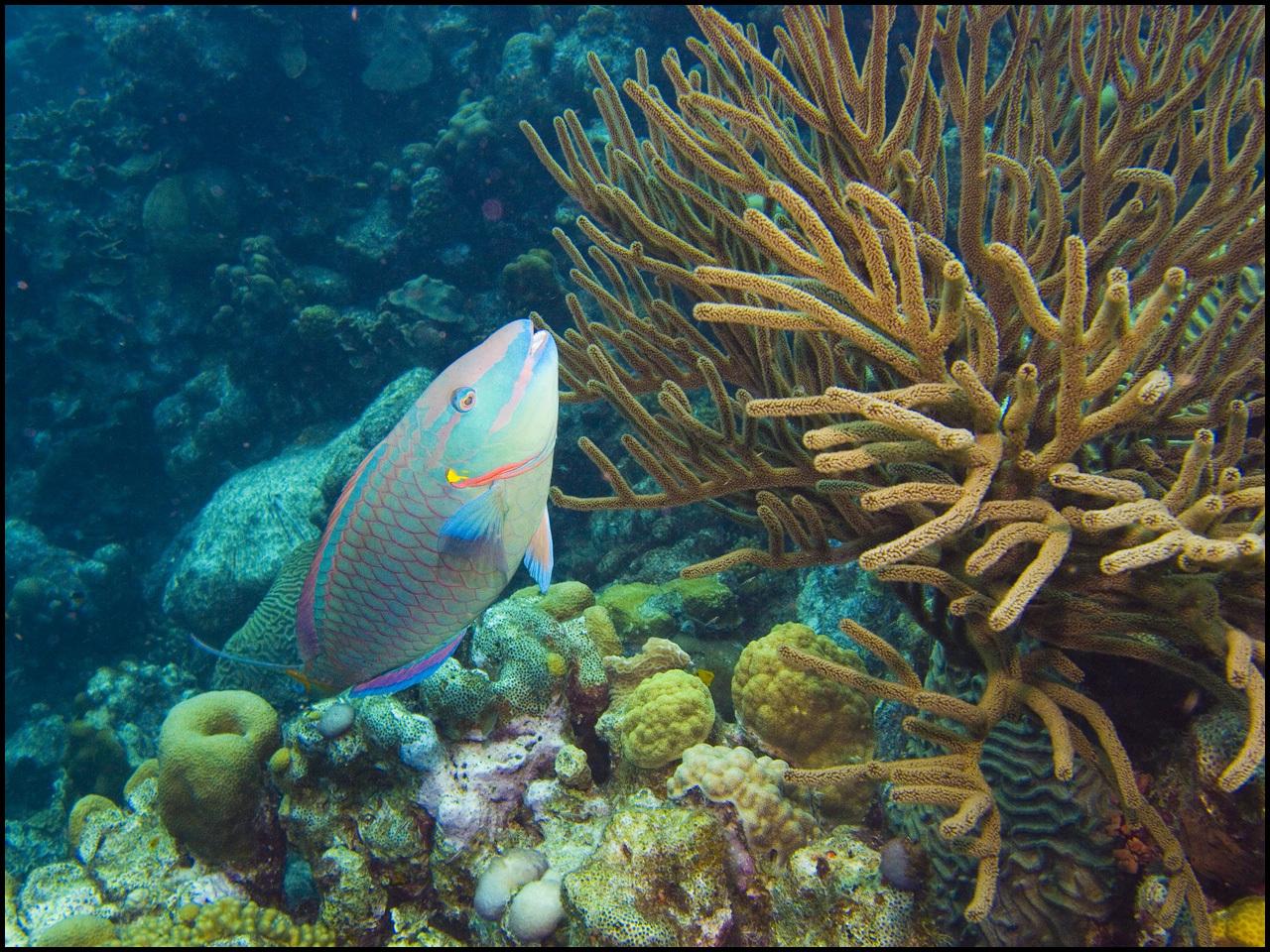 AbbieJeremiah, Seawords Editor
AbbieJeremiah, Seawords Editor
2: Letter From theEditor
4: Drones for MarineScience
8: MarineDebris Cleanup on Kaho?olawe
12: Creatureof theMonth: Manta Ray
18: LifeFinds a Way: RemarkableSea LifeRecovery Post Mass Extinction
20: Crown of Thorns May No Longer bea Thorn in Scientists' Sides
24: TheUN High Seas Treaty
28: MOP Calendar
Front Page: Manta Ray. Photo by: G.P. Schmal/NOAA; Flickr.
Tableof Contents: Parrotfish. Photo by: Ed; Flickr.
Back Cover: Tiny Cowfish Juvenile. Photo by: Klaus Stiefel; Flickr.

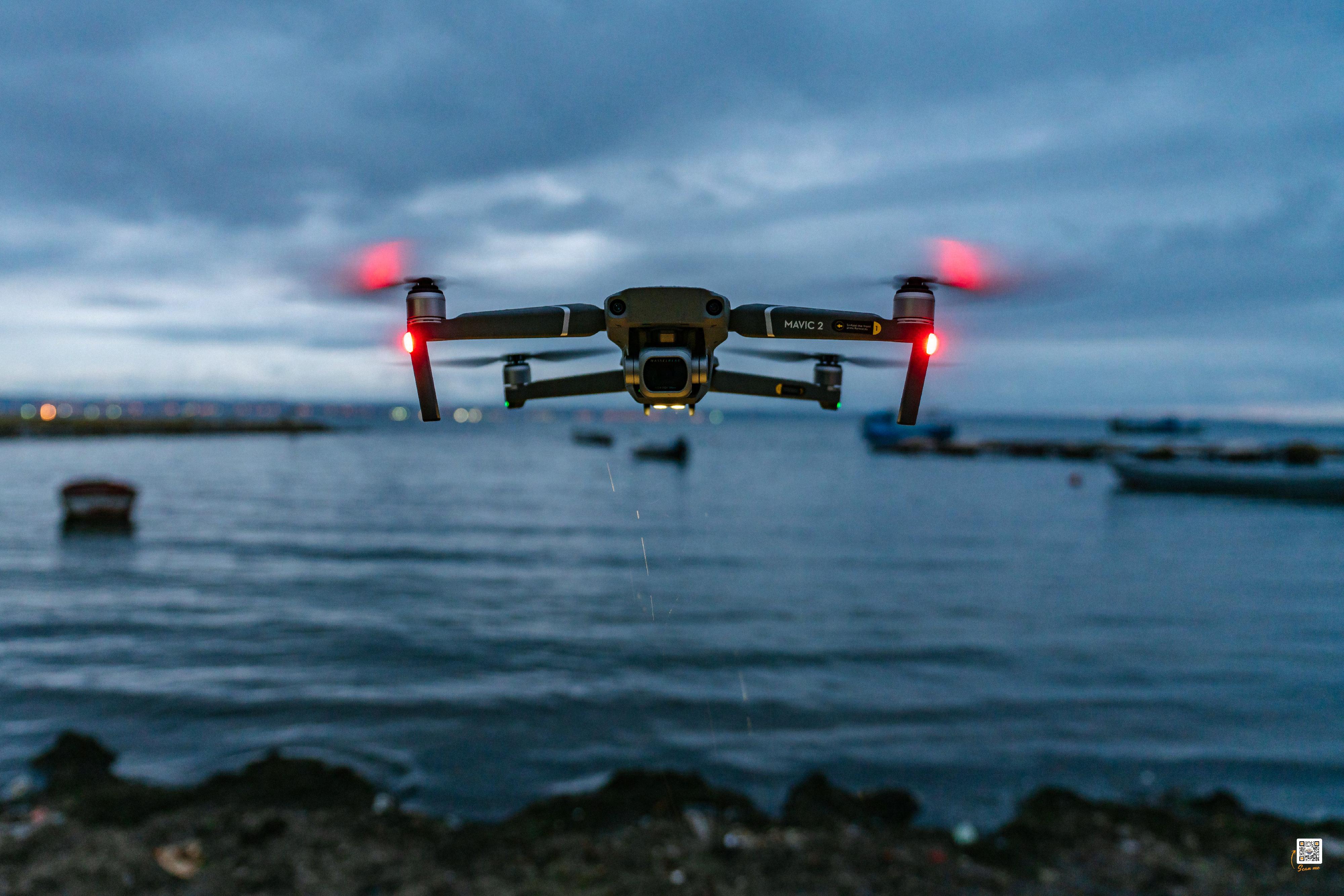 By: Lucian Anderson, UHM MOP Alumnus
Mavic 2Pro inthe Evening.
By: Lucian Anderson, UHM MOP Alumnus
Mavic 2Pro inthe Evening.
Unmanned aerial vehicles (UAVs) or drones have seen tremendous growth as an industry since 2010. Technology that had once been used primarily in military operations is now available to the public to use for recreation. The Federal Aviation Agency allows users to obtain a license to operate UAVs for research and commercial purposes. Given its growth over the decade, it's no surprise that UAVs have been finding transdisciplinary purposes in other fields such as biology, construction, 3D modeling, medicine transport, and marine science. UAVs have given us a new perspective in marine science. Something that used to require a crew, boats, and equipment, now can be done from the beach or off the side of the road near the beach to not disturb people.
In Australia, UAVs are being adopted in many aspects. On the sandy, sunny beaches of Australia it was common to see helicopters flying above beach-goers trying to enjoy their leisure. The purpose of the helicopter patrol is to spot sharks, identify them, and to mitigate shark attacks on swimmers.

Surveys found the Australian public prefer the usage of UAVs over a helicopter flying overhead. Dr. Vincent Raoult, a postdoctoral researcher at Macquarie and Deakin Universities, hopes using UAVs to spot sharks near people will decrease human-shark interactions. An added benefit is the drones are very useful at finding swimmers in distress. More and more agencies in Australia are adopting UAVs for beach patrols because of these benefits and public opinion.
Melissa Marquez, a PhD student at Curtin University in Australia, is using UAVs for wildlife monitoring for her research, observing shark behaviors in a remote lagoon in Western Australia. ?UAVs can make observations throughout the day, just replace the battery and send them off again. It is that easy.?Dr. Vincent Raoult adds that, ?drones in general have very little effect on animal behavior. This means we can observe natural behaviors that were previously difficult to see because they would require finding the interaction in question and then boating/swimming/diving to the
area to observe it, which involves a lot of noise and big things in the water.?
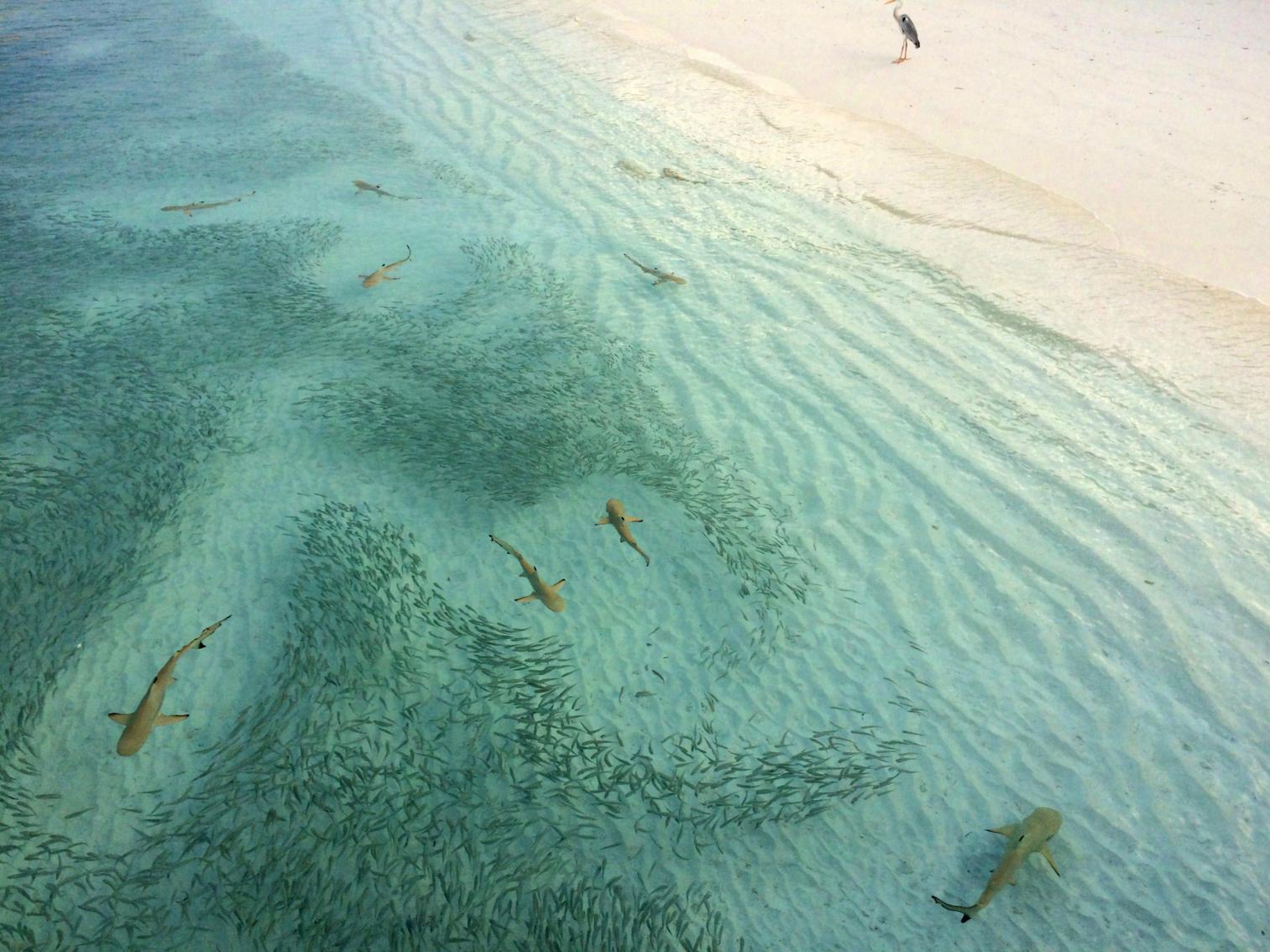
Further south, Ukrainians in Antarctica are using drones to do whale/boat interaction monitoring. The whale?s interactions are observed by UAVs with laser equipment attached. Whale size can be determined more accurately from a UAVperspective than from a boat. Scientists then can determine the whale?s age and attributes such as how much fat the whale has. Scientists have also been using UAVs to observe maternal whale behavior
without the disturbance of a manned boat crew coming near them. This is safer for the whales and the researchers.
Within the UAVfamily are Unmanned Surface Vehicles (USV). They are boats that can be operated without a crew onboard. USVs are used in the tropical regions for hurricane warnings.
NOAA is responsible for the conservation and management of marine species within the United States, including Alaska?s large populations of pollock. When the COVID-19 outbreak happened, USVs
Black TipsHunting.Photo by: Rifath(@photoripey);Unsplash.were adopted to collect data without putting crews at risk. They found that surveys could be conducted 40%faster using USVs, so the agency has been quick to adopt them to collect data to make management decisions regarding fishing in Alaska. So far, they have found that pollock is a stable species and not threatened by overfishing.
UAVs and other drones have had a profound impact on many aspects of society and science. Soon it may become an everyday occurrence with drone deliveries.
Drones have opened doors for researchers to observe wildlife with less disturbance. There are limitations to drones such as some species like seagulls respond negatively to UAVs and battery life can be a constraint. Another issue is sometimes drones can't properly observe depending on the conditions of the water that day, such as rough or choppy waves. While the technology still has some improvements needed, using drones has so far been giving us data that we would not have seen decades ago.

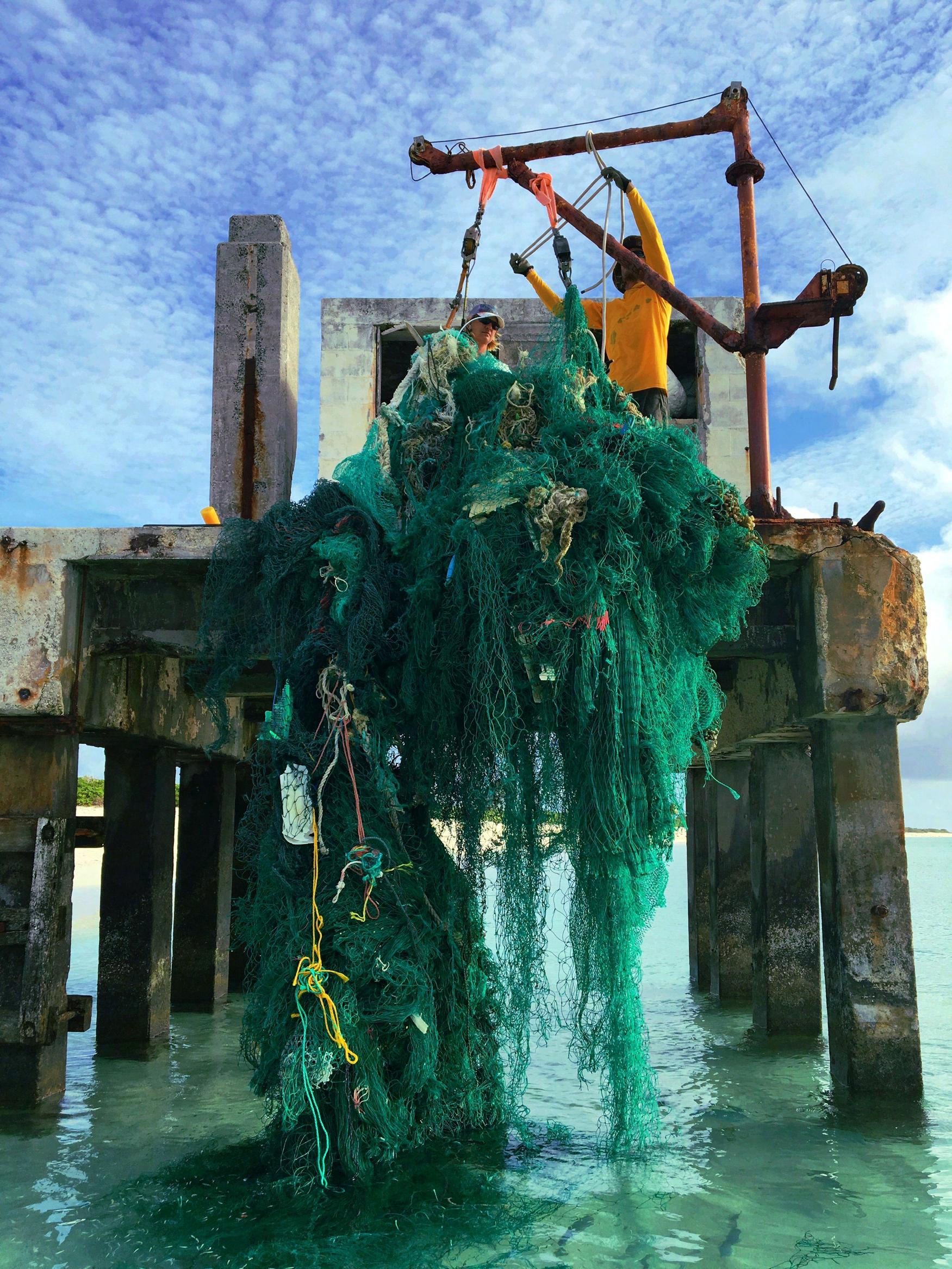 By: Haleychasin,
MOPalumna
By: Haleychasin,
MOPalumna
TheHawaiianIslandchainis thefurthest fromany landmass but islitteredwithmarinedebris. Despitethemost northwestern areaof thechainbeingpart of the protectedPapah?naumoku?kea MarineNational Monument,a WorldHeritagesite,youcanfind derelict fishingnets,plastics, bottles,bottlecaps,cigarette lighters,toysandtoothbrushes accumulatingonbeaches throughout thearchipelago.
Tradewinds,tidesand differencesintemperatureand salinity driveoceancurrents.The oceancreatesdifferent typesof currentssuchaseddies, whirlpools,or deepocean currents.Thelargeoceancurrents arecalledgyresandtherearefive major gyres:theNorthandSouth PacificSubtropical Gyres,the NorthandSouthAtlantic Subtropical Gyres,andtheIndian OceanSubtropical Gyres.
Oncetrashmakesitsway to theocean,it canfloat at or near
thesurfaceor sink downtothe seafloor.Thetrashmoveswith thecurrents,oftenaccumulating inspecificareas.The NorthwesternHawaiianIslands exist withintheNorthPacificGyre andthelow-lyingatollsand shallow reefsact likeafilter or a comb collectingtangled nets.In theHawaiianArchipelago, northeasternfacingshorelines havethelargest amountsof marinedebrisbuildup,duetothe consistent andstrongtradewinds.
TheNOAA MarineDebris Program(MDP)supportspartner agencies,non-government organizationsandcoastal communitiestoprevent,reduce andremovemarinedebris.The MDP

removing derelict fishinggear inthe NorthwesternHawaiianIslands. Since1996,theeffortsby NOAA haveallowedfor theremoval of 923 metrictons(or 2 million pounds)of fishinggear whichis equal to10 adult bluewhales,the
largest animal ontheplanet.
Thefishinggear isthen transportedontoNOAA shipsor charter vesselsandtransported toarecyclingprocessing company called Schnitzer Steel whochopsthefishingnetsinto pieces,transportsthemtothe City andCounty of Honolulu?s H-Power Plant wherethey are convertedintoelectricity for the islandof O?ahu.Additionally, Hawai?i crackeddownonitsuse of single-useplasticsby banning plasticbagsingrocery storesand banningsingle-useplasticfood containersincludingstraws, utensilsandpolystyrene.
Other non-profit organizationslikethe Papah?naumoku?keaMarine DebrisProject (PMDP)are involvedinprotecting Papah?naumoku?keaandits inhabitantsfrommarinedebris.
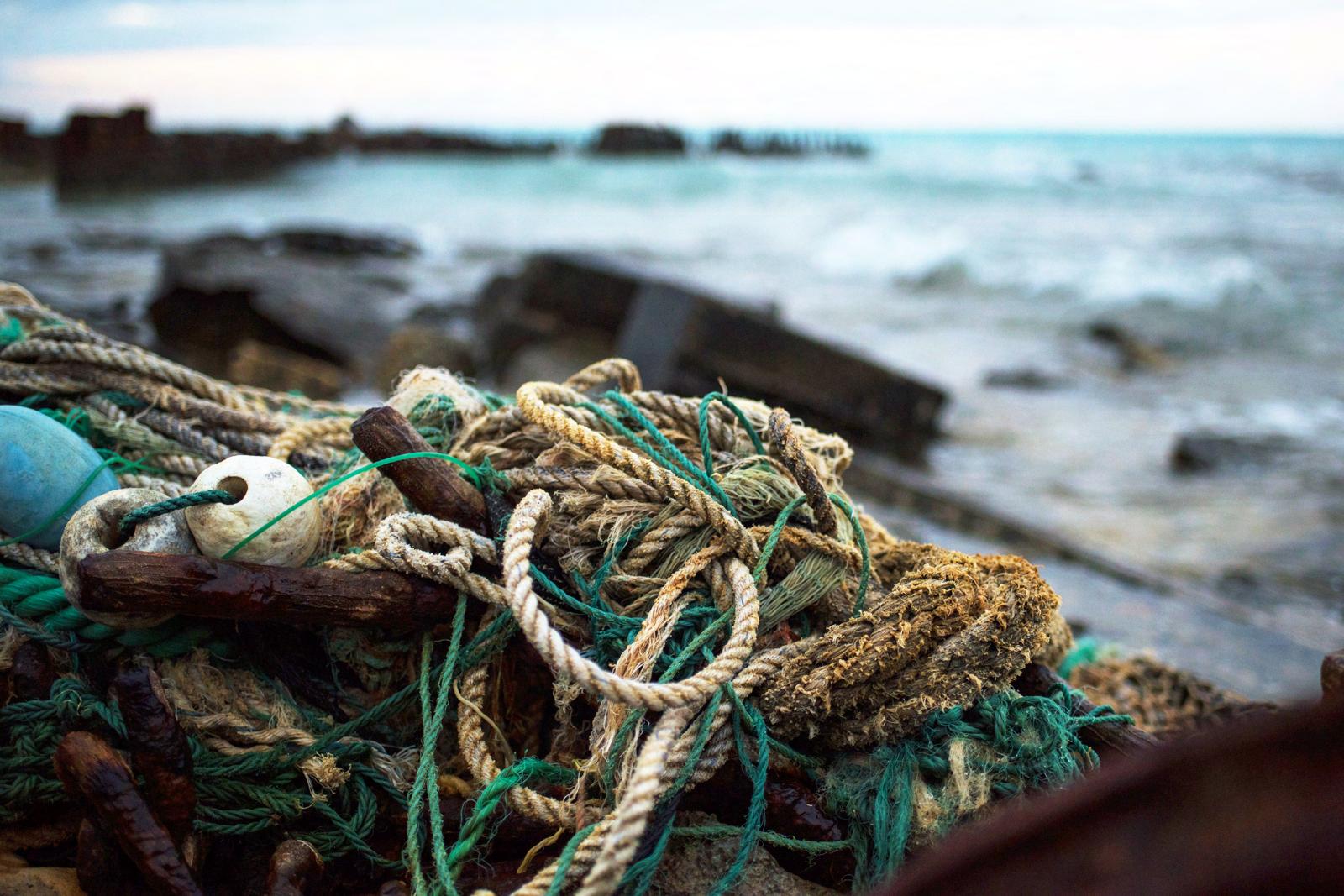
ThePMDPteamregularly embarksonmonth-longmarine debrisremoval expeditionsto
islands,atolls,andreefsincluding H?lanik? (KureAtoll),Kuaihelani (Midway Atoll),Manawai (Pearl andHermesAtoll),Kapou (Lisianski Island),Kamole(Laysan Island), Kamokuokamohoali?i (MaroReef),andLalo(French FrigateShoals).Their last cleanup expedition,whichtook place duringthefall of 2022,managed toremove47,924 kilograms (morethan52 tons)of marine debris.Thedebriswascomposed of 60%in-water derelict fishing nets,whileonshorenets accounted for 30%,andshoreline plasticsaccounted for 10%.
Theoceanbondsand connectsmany islandpeople,who arethenmovedtoactionwhen they witnesspristinelocations isolatedfromtherest of the worldbecomingaffectedby humanpollutants.Animalslike Hawaiianmonk seals,hawksbill seaturtles,humpback whales, falsekiller whales,greensea turtles,Pacificbottlenose
dolphinsandspinner dolphins oftenget entangledinfishing gear andswallow marinedebris. Someof theseanimalsare endangeredor closer to extinctionduetoplasticpollution anddebrisintheoceans.
Recently,theKaho?olawe IslandReserveCommissionand volunteersembarkedonaproject tocleanKanapouBeachonthe
island?seasternside.A teamof threehelicopterscarriedslings loadedwithfabricbagsfilledwith beachtrashfromKaho?olaweto Maui.Tohelpcurbtheincessant accumulationof trashand pollutantsinour oceanswecan refuse,reduce,reuse,andrecycle, especially makingsuretorecycle usedfishingnetsandlineand participateinlocal beachcleanups.

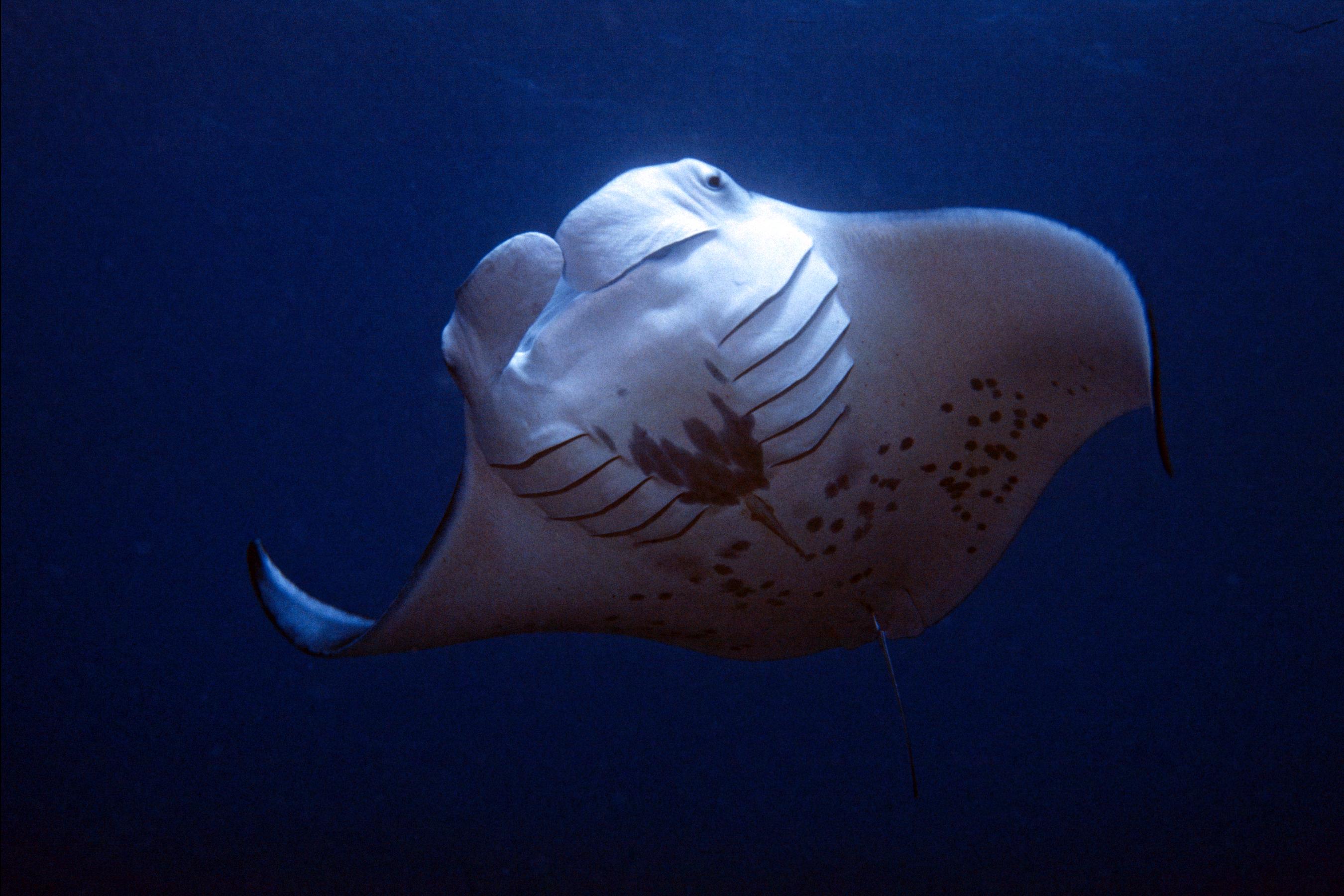 By:AbbieJeremiah,SeawordsEditor
By:AbbieJeremiah,SeawordsEditor
Manta rays areeasily identifiableby their dramatic black-and-whitecoloring and graceful wing-likepectoral fins. Thesegentlegiants are among thelargest fish in the sea, and their distinctive shapeand behavior have captured theattention of scientists and nature enthusiasts alike.
Manta rays belong to the family Mobulidae, which includes two species: the giant manta ray (Mobula birostris) and thereef manta ray (Mobula alfredi). These two species aredistinguished by their sizeand habitat. Giant manta rays can reach a wingspan of up to 8.8 meters (29 feet) and arefound in open waters, whilereef manta rays havea smaller wingspan of about 3.4 meters

(11 feet) and arefound in shallow coastal waters near coral reefs.
Manta rays havea flattened body shape, with a broad head and a pair of large, triangular pectoral fins that they useto swim through thewater. They are known for their distinctive coloration, which includes a dark upper surfaceand a whiteor paleunderside. They haveno teeth and instead usea series of finely combed plates called gill rakers to filter-feed on plankton in thewater. Whilefilter-feeding, the rays can becomequite creative, employing techniques such as somersaulting to maximize thenumber of zooplankton they catch. They also utilize
a method known as chain-feeding, wherethey follow oneanother with their mouths wideopen, forming a cycloneeffect that traps their prey in a vortex.
Manta rays can befound alonebut aresocial animals and areoften observed in groups, called aggregations. Thesegroups can include dozens of individuals and are considered important for mating, feeding, and socializing. They arealso known to regularly stop at coral reef cleaning stations wheresmaller fish will removeparasites and dead skin.
Additionally, manta rays areknown to migratelong distances. Scientists have tracked manta rays as they movebetween feeding
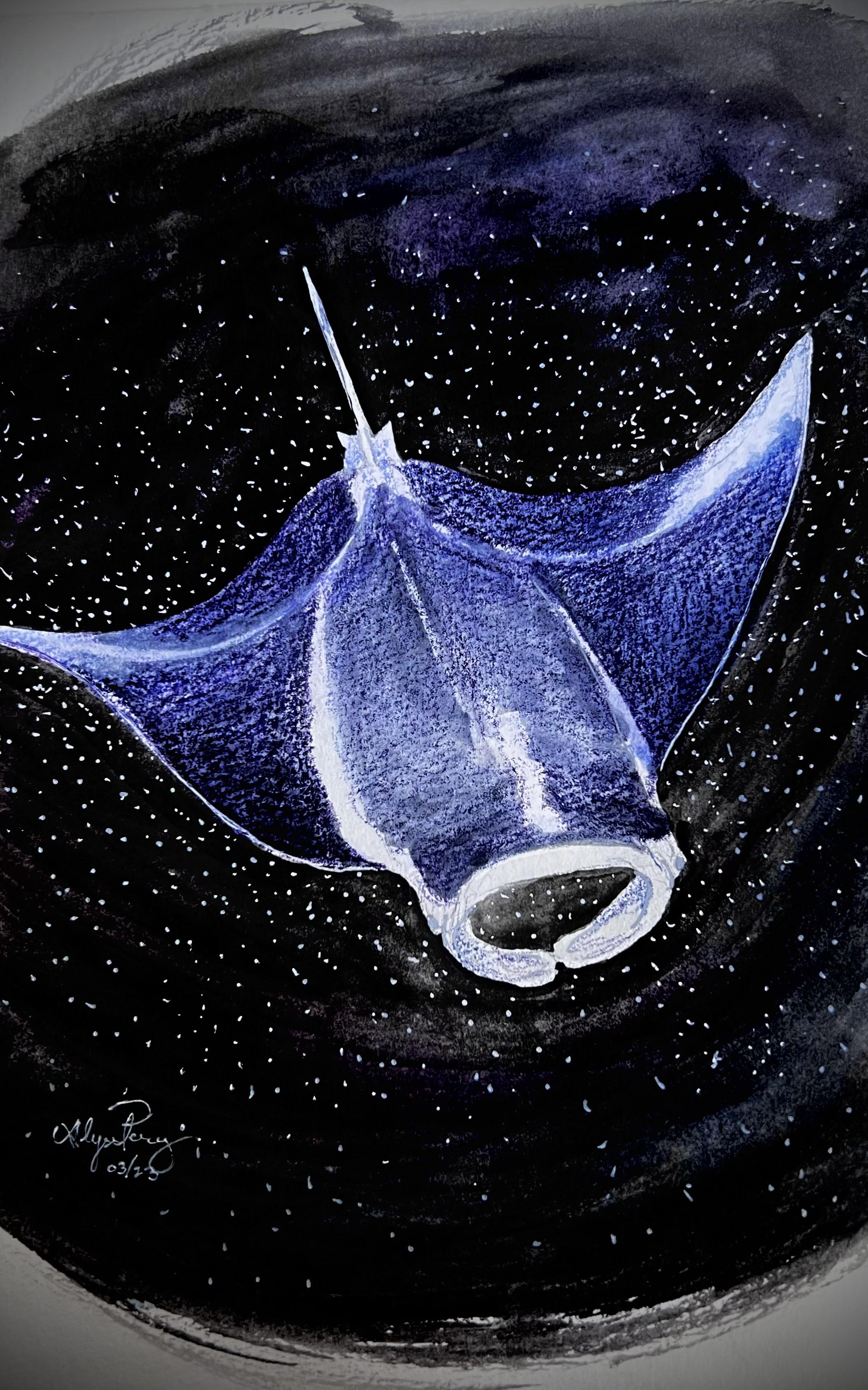

and breeding grounds, sometimes covering thousands of kilometers. Theability to moveacross vast distances is thought to beimportant for maintaining healthy populations and genetic diversity.
Oneof themost fascinating aspects of manta ray behavior is their intelligence. They havethe largest brain-to-sizeratio of any fish and may beable to recognizethemselves in a mirror. Morestudies need to bedesigned and

conducted to accurately measurefish intelligence. Still, their brain size, possibleself-awareness, social nature, and ability to navigatelong distances all point to high cognitive capabilities.
TheInternational Union for Conservation of Nature (IUCN) lists manta rays as vulnerableto extinction. They faceseveral threats, including overfishing, bycatch in fisheries, habitat degradation, and climate change. Manta rays are often targeted for their gill rakers, which areused in traditional medicinein some Asian countries. Conservation efforts for manta rays include protection from targeted and accidental capturein
fisheries, as well as the creation of marineprotected areas wheretheseanimals can thrive. Scientists are also studying manta rays' migration patterns and genetics to better understand their behavior and biology, which can inform conservation efforts.
Manta rays are remarkablecreatures that play an essential rolein the ocean ecosystem. Their uniquebiology and behavior makethem a fascinating subject for scientific study, but also makethem vulnerableto human activities. By protecting theseanimals and their habitat, wecan ensure futuregenerations will continueto marvel at the majesty of themanta ray.
 By Sofía Flores Pina, UHM MOP Student
By Sofía Flores Pina, UHM MOP Student
A discovery of fossils in Guizhou China has discredited the commonly accepted and longstanding theory of evolution in complex organisms following mass extinction. Prior to this discovery, it was largely maintained that Earth was primarily inhabited by simple species for 5-10 million years before theemergenceof complex
ecosystems. But 252 million years ago, thePermian-Triassic extinction event, also referred to as TheGreat Dying, terminated over 90 percent of theEarth?s species. This event ?...serve[d] as a model for studying biodiversity loss on our planet today,?said Academy Curator of Geology Dr. Peter Roopnarine. However, a host of well-preserved
Marble SkinFishFossil.Photo by:NicolasRaymond;Flickr.fossils from 250.8 million years ago boasts great biodiversity.
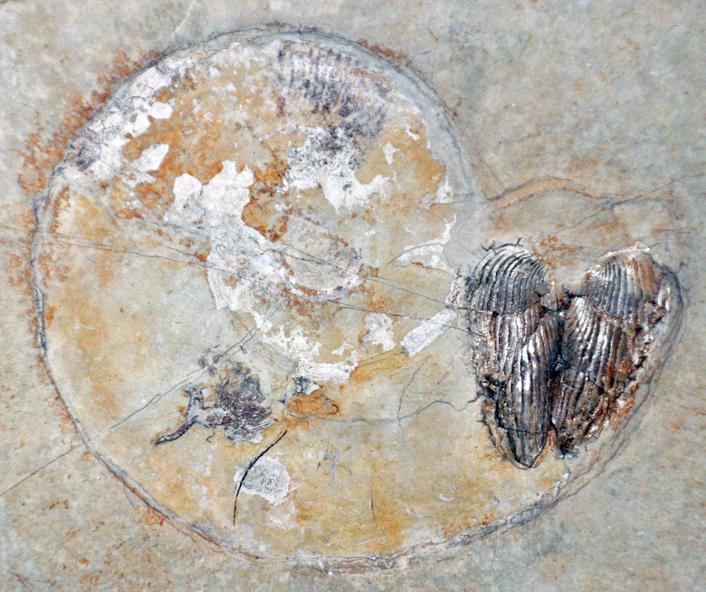


Scientists speculatethe Permian-Triassic extinction event occurred as a result of increased volcanic activity and a subsequent spikein atmospheric carbon dioxide. Ocean deoxygenation, ocean acidification, and overall increasein global temperatures ensued, creating conditions similar to anthropogenic climatechange. Despitethese detrimental effects, lifequickly recovered.
Using radiometric dating, rocks in thearea surrounding the discovery weredated, offering unheard of results. A team of international scientists found that thespecimens in theGuizhou region evolved much quicker than was
previously thought. A process once believed to takeat thevery least 5 million years, occurred in a mere1.2 million years. Taking into consideration how soon after the event theseorganisms lived, ?the diversity is remarkable,?says palaeontologist Guang Shi of the University of Wollongong in Australia. In theyears between 2015 and 2019, China University of Geosciences palaeontologist Xu Dai and his team collected morethan 1,000 fossils in theGuiyang biota. Thefossils collected comprisea wholepyramid of food-web tiers ranging from singlecelled organisms to apex predators. Whilethis display of recovery is yet to beexplained in full, it?s a remarkabletestament to theintelligenceand resiliency of life.
PermianSea Snail Fossil.Photo by:ChrisBaird;Flickr.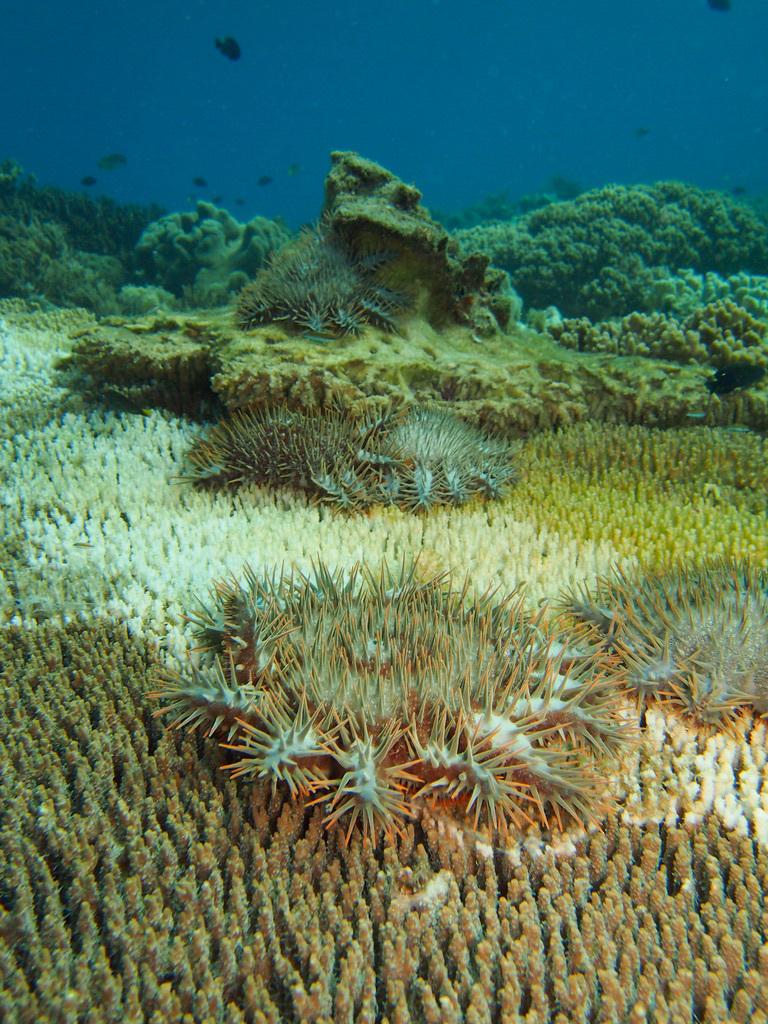 By: Alexandrya Robinson, UHM MOP Student
By: Alexandrya Robinson, UHM MOP Student
In the Pacific Ocean off the coast of Australia, lies the Great Barrier Reef, a research focal point in understanding how coral reefs are impacted by climate change, ocean acidification, eco-tourism, invasive species, and even native species. The Great Barrier Reef currently faces a threat from a native species on the reef, Acanthaster planci, also known as the Crown of Thorns Starfish (CoTS).
This Indo-Pacific native species of starfish has venomous spines that give its name resembling the crown placed upon Jesus?s head during his crucifixion. The venom is a neurotoxin that can cause hemolysis and is dangerous for humans and marine creatures. As they crawl over the reef, A. planci eat coral polyps, making them a destructive force on the already vulnerable Great Barrier Reef.
One hypothesis that explains A. planci?spopulation explosion is the removal of the snails and fish that prey on young sea stars. Another hypothesis is that A. planci have higher reproductive success and much faster sexual maturity than previously thought. A single female can produce multiple millions of gametes per spawning session during the summer leaving large clouds of gametes in the water column. Their planktonic stage lasts a few weeks during which they feed on phytoplankton, growing relatively undisturbed until they mature at six months, when they switch to eating coral, and begin their own reproduction within two years. Even if the male and female gametes don?t meet, A. planci can reproduce by asexual cloning like many other echinoderms.
It is estimated that a single A. planci can clear up to 12 m2
of the soft polyp tissues of foundational reef corals like Acropora in a single year. Since the 1970?s there has been a race to find a solution to successfully removing large batches of this thorny menace. Recently a $9.8M project has been started with multiple collaborating entities. The Australian Institute of Marine Science (AIMS) has pioneered research using environmental DNA (eDNA) that is compared to known samples of body tissue samples, fecal matter, and gut DNA to find out when an organism is feeding and to identify their current life stage. eDNA is incredibly valuable and much cheaper than alternative options even with its limitations based on environment quality, organism DNA shedding rate, small segmentation of DNA, DNA ease of movement from one place to another, sampling ability, and the fact DNA degrades much faster in
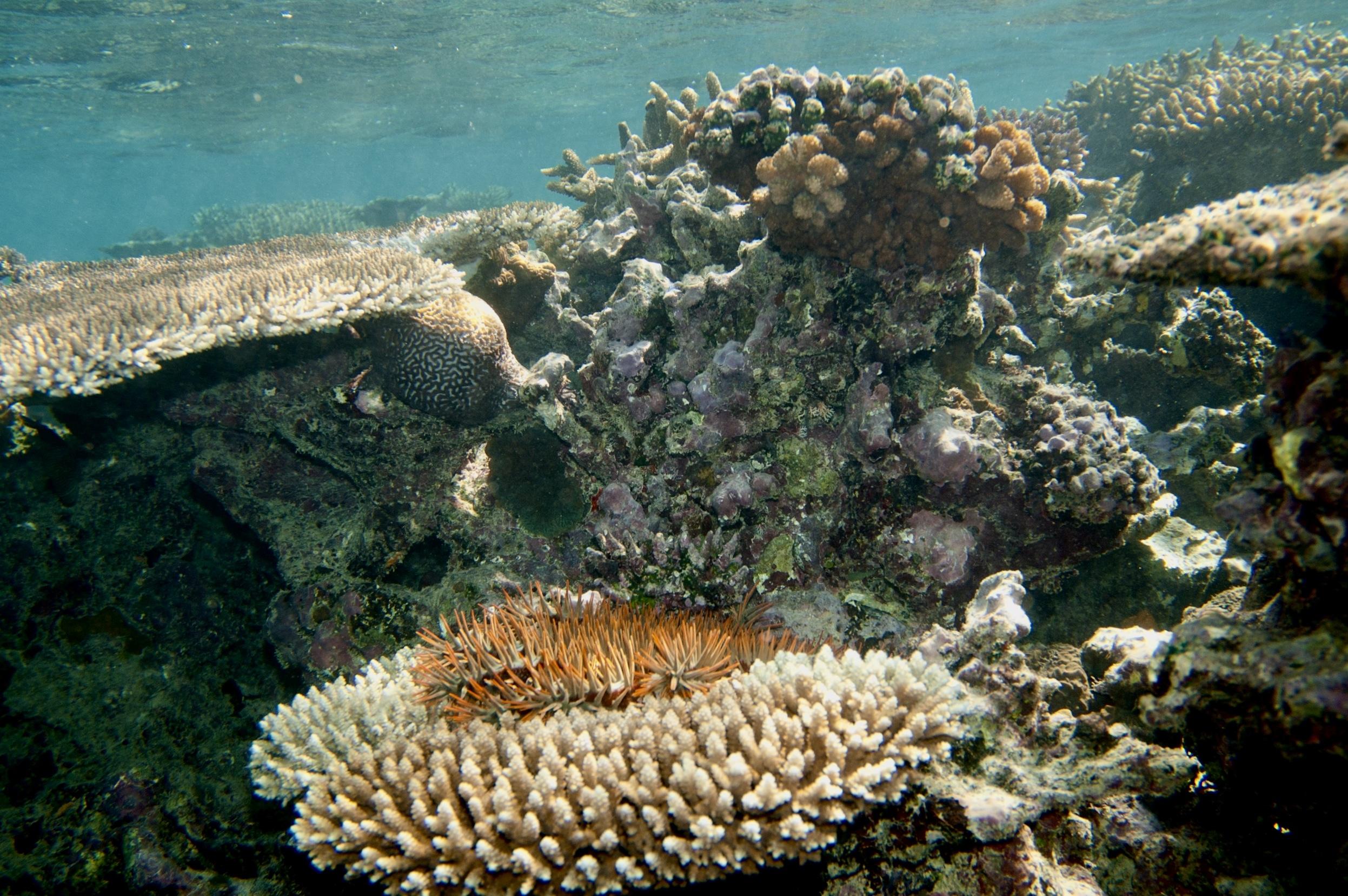
warmer climates which is the primary area where A. planci lives.
CoTSControl Innovation Program (CCIP) was founded on the idea of using eDNA for earlier detection and treatment of the larval stages of A. planci before they mature and begin to eat coral. Methods of managing CoTSpopulations include the use of robotics to identify A. planci genetics, eDNA sampling for monitoring, pheromone targeting, and even the introduction of natural predators such as the giant triton snail that can eat adult A. planci. Other marine species which are naturally immune to the toxins produced by A. planci and can eat their adult bodies include the M?ori wrasses, starry toadfish, titan triggerfish, pineapple trigger, and harlequin shrimp. Young A. planci that are still soft can be eaten by crabs, shrimp, and
marine worms. These efforts are highly valuable because they are more efficient and prolific than previous human interventions such as removal and patrol of the over 2,300 kilometers of the Great Barrier Reef. However, direct removal should not be completely discounted as shown by the work of the Cook Islands younger generation who hunt
A. planci and use the bodies of the starfish as fertilizer as a part of the K?rero O Te ??rau?s initiative to maintain self-reliance for food sources. All together these efforts make up the future of Acanthaster planci control and management and work to preserve the reef flats in the Indo-Pacific for future generations.
 Crownof ThornsStarfish, Acanthaster planci.Photo by:Paul Asmanand Jill Lenoble;Flickr.
Crownof ThornsStarfish, Acanthaster planci.Photo by:Paul Asmanand Jill Lenoble;Flickr.
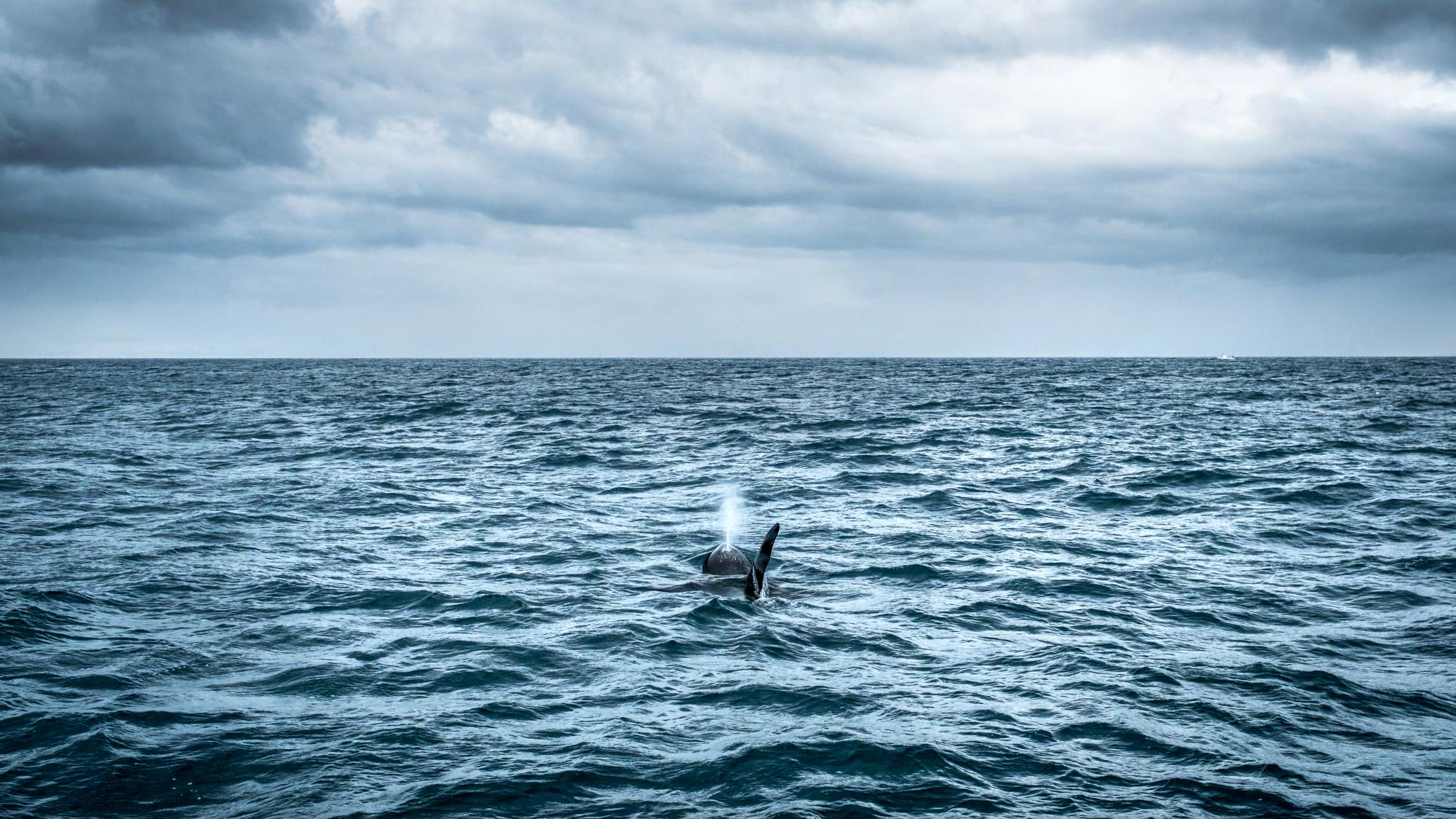
After years of talks and negotiations,the UN signed the High Seas Treaty,which aims to protect an extra 30% of the oceans by 2030.As one of the very few agreements that makes an effort to protect global seas,the other being the UN Convention on the Law and Sea,this agreement marks a vital step in the efforts to protect the ocean and specifically,the marine life residing in the high seas.
Countries have jurisdiction out to 200 nautical miles off of their own shores.The area past that is known as the high seas and is virtually lawless and unprotected.The High Seas make up around ? of the world's ocean,and around half of the Earth's surface.It is hard to imagine how such a vast area has gone
unprotected for so long;until recently,only 1.2%of the high seas was monitored,and the consequences of this are starting to show.
Marine life living in these unprotected areas are at higher risk of shipping traffic, climate change,and overfishing,with no previous laws to regulate them.As a result around 10%of all marine animals are at risk for extinction.This new UN agreement will start to put limits on the amount of fishing that can be done.It also will monitor the deep-sea fishing routes and deep-sea mining activities.
The treaty will also make an effort to establish Marine Protected Areas (MPAs) in the high seas.MPAs work to limit human interactions within a given area.Previously,there were no MPAs in the high seas,
but now countries have the ability to vote about certain areas to protect.The treaty does allow current research projects to continue,but researchers must announce to the public their plan and path.This also has the benefit of encouraging scientists from lower income countries to join in on research projects.
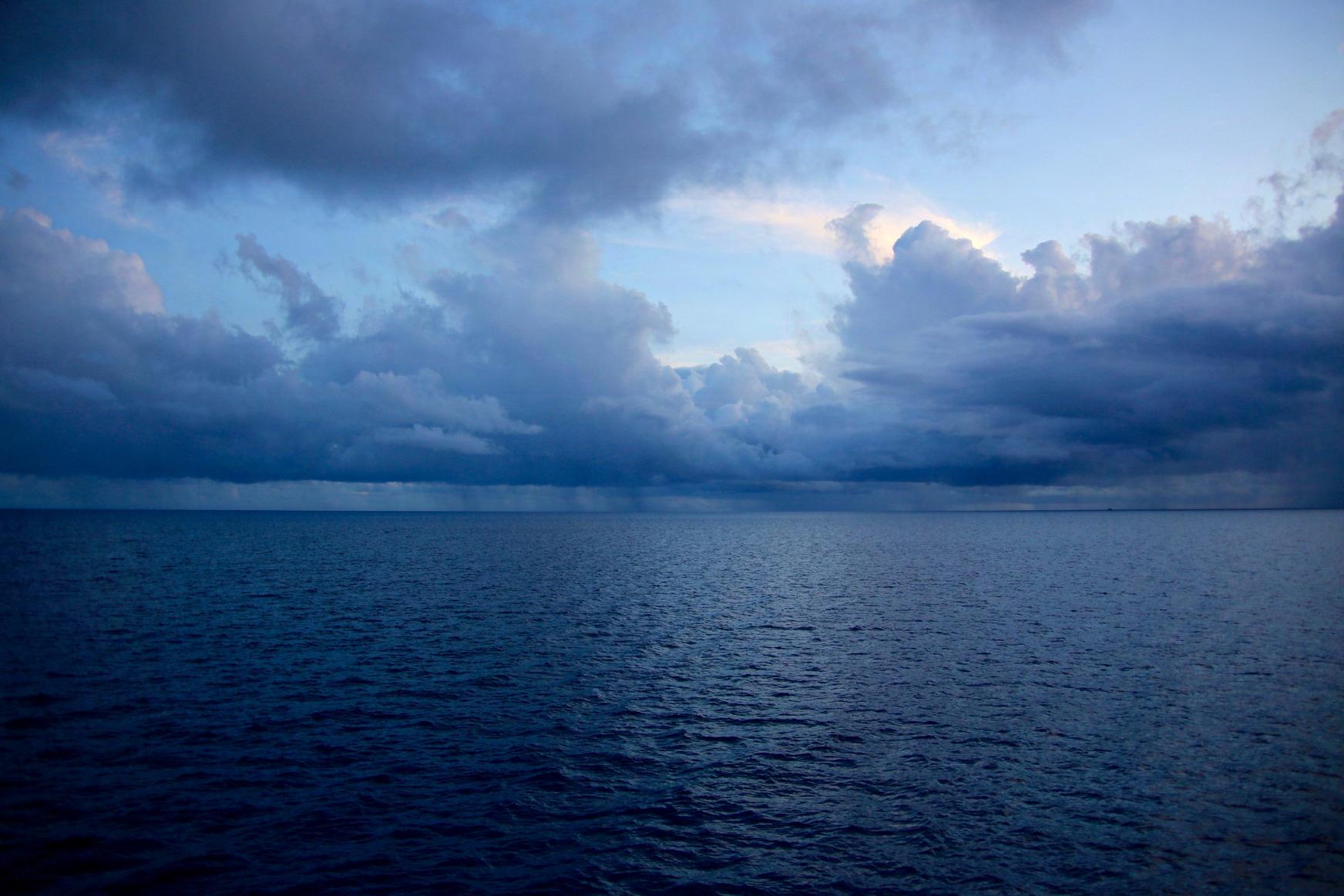
A big concern that held up the talks was the royalties from marine genetic resources (MGR).MGRs refer to the biological matter of marine plants and animals and their potential to become resources for providing insight into new lifesaving advancements.Undoubtedly, the ocean provides humans with vital resources like food and oxygen,but the scientific advancements made from studying marine animals are also vital to medicine and other industrial processes.
Like many other aspects, first world countries have a head start when it comes to gathering these important genetic resources.A large part of the negotiation was the argument that developing countries who don't yet have the ability to harvest MGRs should also be able to reap the benefits if the resource was found close to their shoreline. Delegates from the developing countries and first nations agreed that the resources found would be ?shared in a fair and equitable manner.? The treaty also established a ?benefit-sharing committee? which would be composed of 15 experts nominated by the UN.This attempts to guarantee the access of all countries to the benefits the deep-sea organism can offer.
Scientists across the globe seem to be pleased
with the outcome of the treaty. However,the process to sign was long and complicated. Delegates from across the world extended their trips and worked for days to guarantee an agreement that would begin to protect the vital limited resources of the high seas.The final session lasted 38 hours and ended 4 days after the agreement was
supposed to be signed. Thanks to the scientists and delegates that worked to pass this treaty,there are now laws in place protecting marine organisms in the high seas. There are still many undiscovered organisms residing in the ocean and it is extremely important to protect their habitat so that we are able to learn more about them.
 Rangiroa,FrenchPolynesia.
Rangiroa,FrenchPolynesia.
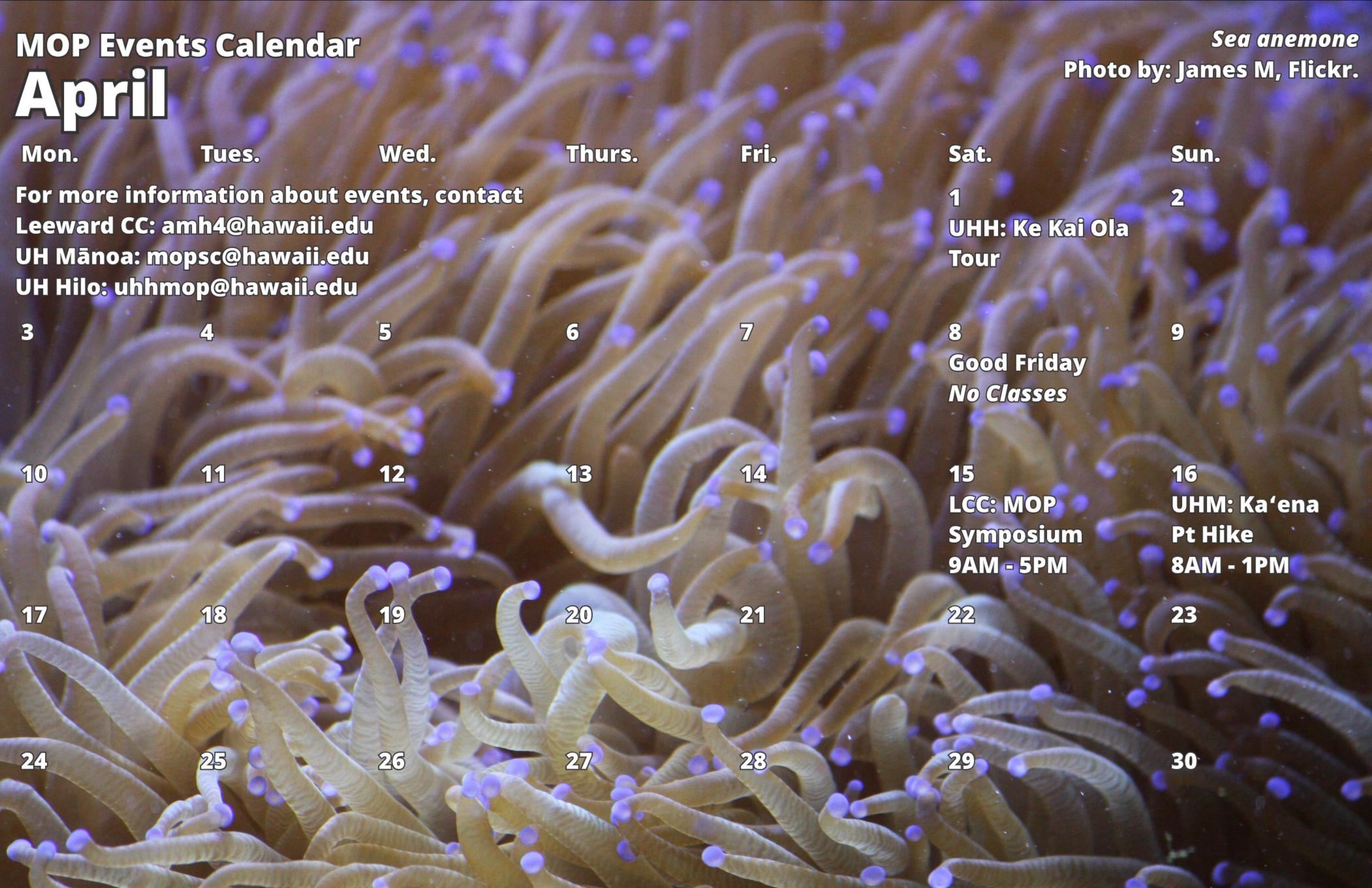

Volume XXXVIII,Number 4
Editor: Abbie Jeremiah Dr.Cynthia Hunter (eminence grise) Jeffrey Kuwabara (eminence grise)
Writing Team: Chloe Molou,Lucian Anderson,Alexandrya Robinson, Haley Chasin,Abbie Jeremiah,Sofia Flores Pina,Sara McGhee,Dora Figueroa
Seawords- Marine Option Program
University of Hawai?i,College of Natural Sciences
2450 Campus Road,Dean Hall 105A
Honolulu,HI 96822-2219
Telephone:(808) 956-8433
Email:<seawords@hawaii.edu>
Website:<http://www.hawaii.edu/mop>
Seawords isthe monthly newsletter newsletter of the Marine Option Program at the University of Hawai?i.Opinions expressed herein are not necessarily those of the Marine Option Program or of the University of Hawai?i.

Suggestions and submissionsare welcome.Submissions may include articles,photography,art work,or anything that may be of interest to the marine community in Hawai?i.and around the world.

All photosare taken by MOP unlessotherwise credited.
